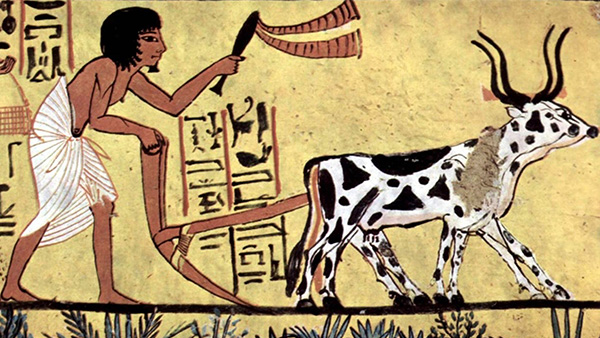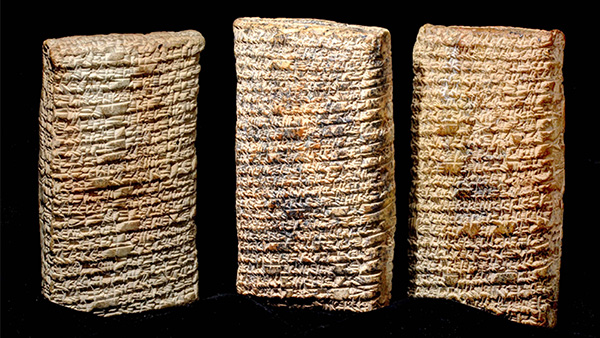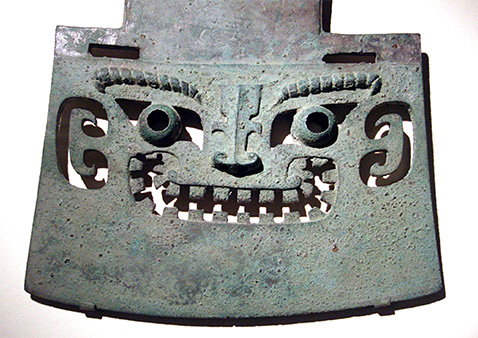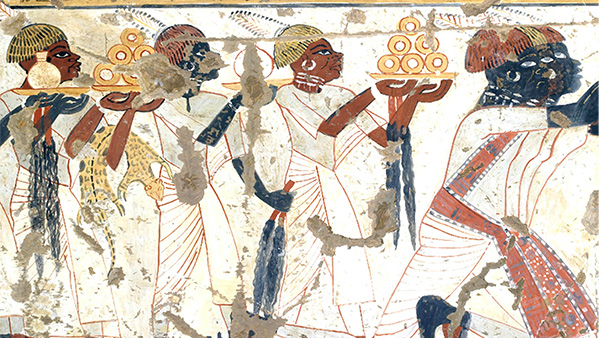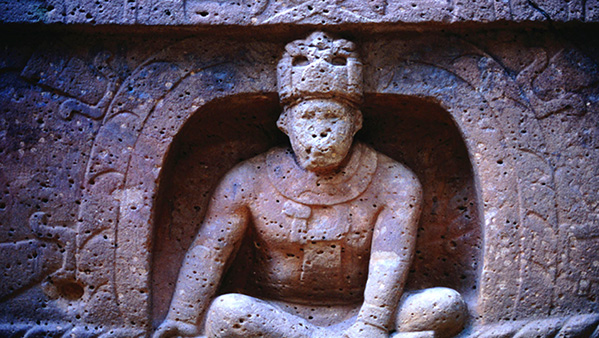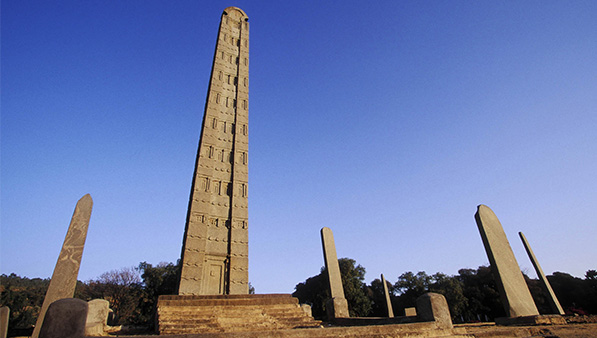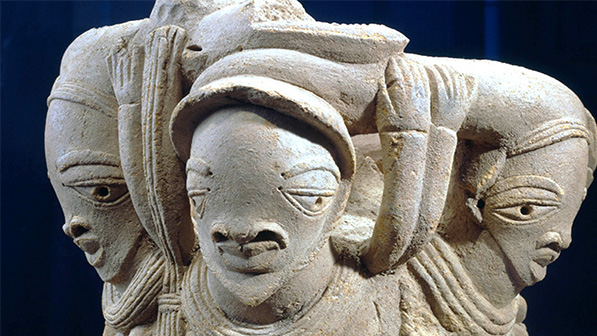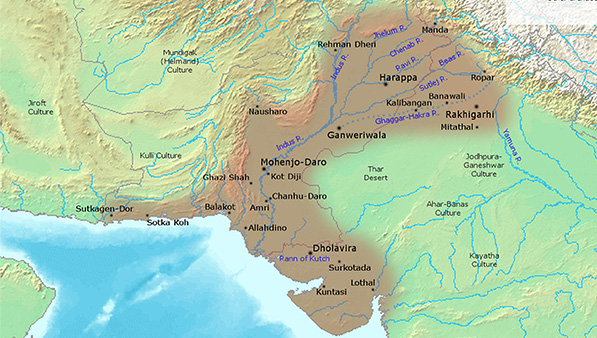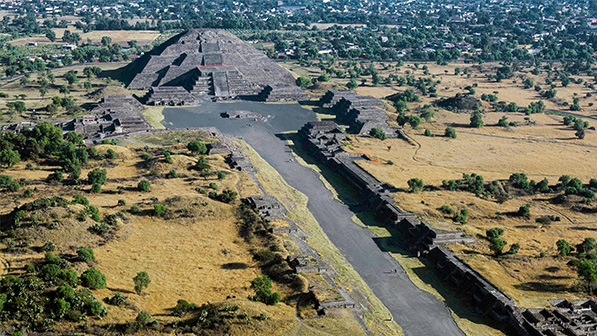Early Agrarian Societies
Driving Question: Why did large agrarian states arise in some places but not others?
Complex agricultural societies emerged independently in different regions across the world, each shaped by its unique geography, climate, and resources. Explore the key similarities and differences of several early agrarian societies around the world to understand why geographic context influenced how they developed.
Learning Objectives:
- Evaluate the formation of early agrarian states and key similarities and differences between these societies.
- Evaluate early states in the Americas and consider how some of them challenge traditional ideas about states.
- Use the historical thinking practice of contextualization to understand and analyze early agrarian societies.
Vocab Terms:
- contextualize
- elite
- inequality
- infrastructure
- legal code
- oral tradition
- ritual
Opener: Early Agrarian Societies
To teach this lesson step, refer to page 3 of the Lesson 3.5 Teaching Guide.
Why is Mesopotamia called the “Land of Firsts”? Did the Olmec carve giant stone heads of their gods or their kings? See if you can figure out what’s true and what’s false.
Contextualizing History
To teach this lesson step, refer to page 3 of the Lesson 3.5 Teaching Guide.
Check out the Contextualization One-Pager for more information on how we approach this skill in our courses.
To understand where we are, we must understand where we’ve been. That might sound like something from a self-help book, but you’ll soon see why knowing the context for an event is so important.
Societies Develop
To teach this lesson step, refer to page 5 of the Lesson 3.5 Teaching Guide.
Looking to provide feedback on your students’ adoption of the Three-Step Reading process? Read this conversation to learn how other teachers have handled this.
Farming led to both cities and states, but even though many societies had similar structures and strategies, they weren’t all the same.
-
Guiding Questions
-
Before you read
Preview the questions below, and then skim the article. Be sure to look at the section headings and any images.
While you read
Look for answers to these questions:
- What is the definition of a state?
- Where and when did agrarian societies emerge first?
- What processes led people to form states?
- Where were there regions without “early societies”?
- What were some common characteristics of agrarian societies?
After you read
Respond to this question: Why do you think some historians prefer not to use the word civilization?
Early Agrarian Societies Jigsaw
To teach this lesson step, refer to page 6 of the Lesson 3.5 Teaching Guide.
The Contextualization Feedback Form helps you and your students understand how well they’re learning this skill and the next steps they might need to take.
Each of the articles below explores a unique early agrarian society. Select one that you’ll use to complete the contextualization activity.
-
Guiding Questions
-
Before you read
Preview the questions below, and then skim the article. Be sure to look at the section headings and any images.
While you read
Look for answers to these questions:
- How and why did early agrarian societies form in this region?
- What does evidence from the Fertile Crescent tell you about how production and distribution worked in this society?
- What does evidence from this reading tell you about how people in this society formed and maintained communities?
- What does the evidence in this reading tell you about how the societies in this region participated in networks that moved ideas, people, and things?
After you read
Respond to these questions:
- What is the principal evidence cited in this article?
- How do you think the availability of different kinds of evidence affects what we know about these societies?
-
Guiding Questions
-
Before you read
Preview the questions below, and then skim the article. Be sure to look at the section headings and any images.
While you read
Look for answers to these questions:
- How and why did early agrarian societies form in this region?
- What does evidence from the Shang Dynasty China tell you about how production and distribution worked in this society?
- What does evidence from this reading tell you about how people in this society formed and maintained communities?
- What does the evidence in this reading tell you about how the societies in this region participated in networks that moved ideas, people, and things?
After you read
Respond to these questions:
- What is the principal evidence cited in this article?
- How do you think the availability of different kinds of evidence affects what we know about these societies?
-
Guiding Questions
-
Before you read
Preview the questions below, and then skim the article. Be sure to look at the section headings and any images.
While you read
Look for answers to these questions:
- How and why did early agrarian societies form in this region?
- What does evidence from the Nile River region tell you about how production and distribution worked in this society?
- What does evidence from this reading tell you about how people in this society formed and maintained communities?
- What does the evidence in this reading tell you about how the societies in this region participated in networks that moved ideas, people, and things?
After you read
Respond to these questions:
- What is the principal evidence cited in this article?
- How do you think the availability of different kinds of evidence affects what we know about these societies?
-
Guiding Questions
-
Before you read
Preview the questions below, and then skim the article. Be sure to look at the section headings and any images.
While you read
Look for answers to these questions:
- How and why did early agrarian societies form in this region?
- What does evidence from the Americas tell you about how production and distribution worked in these societies?
- What does evidence from this reading tell you about how people in this society formed and maintained communities?
- What does the evidence in this reading tell you about how the societies in this region participated in networks that moved ideas, people, and things?
After you read
Respond to these questions:
- What is the principal evidence cited in this article?
- How do you think the availability of different kinds of evidence affects what we know about these societies?
-
Guiding Questions
-
Before you read
Preview the questions below, and then skim the article. Be sure to look at the section headings and any images.
While you read
Look for answers to these questions:
- How and why did early agrarian societies form in this region?
- What does evidence from Aksum tell you about how production and distribution worked in this society?
- What does evidence from this reading tell you about how people in this society formed and maintained communities?
- What does the evidence in this reading tell you about how the societies in this region participated in networks that moved ideas, people, and things?
After you read
Respond to these questions:
- What is the principal evidence cited in this article?
- How do you think the availability of different kinds of evidence affects what we know about these societies?
-
Guiding Questions
-
Before you read
Preview the questions below, and then skim the article. Be sure to look at the section headings and any images.
While you read
Look for answers to these questions:
- How and why did early agrarian societies form in this region?
- What does evidence from Nok society tell you about how production and distribution worked in this society?
- What does evidence from this reading tell you about how people in this society formed and maintained communities?
- What does the evidence in this reading tell you about how the societies in this region participated in networks that moved ideas, people, and things?
After you read
Respond to these questions:
- What is the principal evidence cited in this article?
- How do you think the availability of different kinds of evidence affects what we know about these societies?
-
Guiding Questions
-
Before you read
Preview the questions below, and then skim the article. Be sure to look at the section headings and any images.
While you read
Look for answers to these questions:
- How and why did early agrarian societies form in this region?
- What does evidence from the Indus River region tell you about how production and distribution worked in this society?
- What does evidence from this reading tell you about how people in this society formed and maintained communities?
- What does the evidence in this reading tell you about how the societies in this region participated in networks that moved ideas, people, and things?
After you read
Respond to these questions:
- What is the principal evidence cited in this article?
- How do you think the availability of different kinds of evidence affects what we know about these societies?
Ancestral Pueblo Societies
To teach this lesson step, refer to page 14 of the Lesson 3.5 Teaching Guide.
The OER Project Video Guide provides great information on best practices for using video in the classroom.
The Pueblo built a tremendous cultural zone in the American Southwest. How did they use migration to help their societies survive?
-
Guiding Questions
-
Before you watch
Preview the questions below, and then review the transcript.
While you watch
Look for answers to these questions:
- How does the story of the Ancestral Pueblo challenge world-historical narratives about agriculture and complex societies?
- How does Theresa Pasqual characterize Pueblo origin stories?
- According to Dr. Natalie Martinez, why are these origin stories important today?
- According to Dr. Kurt Anschuetz, what are some strategies that Pueblo people used to thrive on the Colorado Plateau?
- How does Theresa Pasqual describe the movement of the Ancestral Pueblo people?
After you watch
Respond to these questions:
- What do you think are the differences in what we can learn from archaeology and oral traditions?
- What do you think historians should do when the two types of evidence disagree?
Key Ideas
Closer: Early Agrarian Societies
To teach this lesson step, refer to page 15 of the Lesson 3.5 Teaching Guide.
Closers are a great way to informally evaluate student understanding. Read more about that in the OER Project Assessment Guide.
In this lesson, you explored various early agrarian societies to see how geography shaped their development.
Writing: Impacts of Early Societies
To teach this lesson step, refer to page 16 of the Lesson 3.5 Teaching Guide.
In this writing activity, you’ll use evidence from sources to support an argument that responds to the question: In what ways did complex societies positively and negatively impact the people living within them, as well as those outside their borders?
Teotihuacan and Maya City-States
To teach this lesson step, refer to page 16 of the Lesson 3.5 Teaching Guide.
Welcome to the ancient city of Teotihuacan, the dominant power in the ancient Mesoamerican region. Think you know what an ancient city was like? Teotihuacan might surprise you.
-
Guiding Questions
-
Before you read
Preview the questions below, and then skim the article. Be sure to look at the section headings and any images.
While you read
Look for answers to these questions:
- What are some ways that Mesoamerica differed from Afro-Eurasian regions where many of the first complex societies developed?
- How did the Maya overcome the environmental challenges they faced?
- How did a drought destabilize the authority of the Maya rulers?
- What are some explanations for why Teotihuacan grew so large and important?
- What are some possible explanations for Teotihuacan’s collapse?
After you read
Respond to this question: Is the area you live an environment that might have encouraged the development of ancient complex societies?
Jenne-Jeno Case Study
To teach this lesson step, refer to page 17 of the Lesson 3.5 Teaching Guide.
The African city of Jenne-Jeno had a formation quite unlike many other ancient cities and states. How did it come to be?




